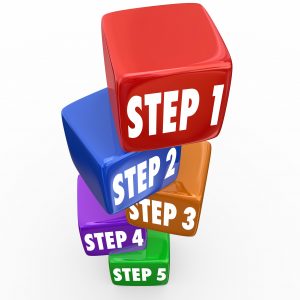If you’re new to the running world and unsure of where to start, don’t sweat it (no pun intended). If you are on the search for the types of shoes best for running, I highly recommend you click here to read, “How To Choose The Best Running Shoes – Part 1”.
By now you have determined:
- The type of foot arch you have
- Whether you over- or under-pronate when you walk or run
- The appropriate shoe category
- Road-running shoe
- Trail-running shoe
- Cross-training shoe
- Barefoot/Minimalist shoe (This shoe type will only be discussed briefly in this article but if you’re interested click here to watch my TV segment on the topic)
After reading Part 1 of my article, you will have a little more confidence in your ability to pick out the types of shoes that are right for you. Remember, most seasonal workers at a department store that sell runners are equipped to get you the desired size and not much more. So, if you require a little more assistance or input from a gait and biomechanical perspective, I would recommend going to a store that deals exclusively with runners. They have staff that may be able to offer more insight from a runner’s perspective.

So, You’re In The Store, Looking At The Wall Of Different Types Of Shoes, What’s Next?
Follow these steps to help you pick the correct runner for you.
1. Try on shoes at the end of the day
Our feet normally swell by the end of the day. This is important when trying on shoes so that you don’t pick a shoe that is too small for your foot. Tight or small shoes will affect circulation and may cause blisters and foot irritation. Especially after a run.
2. Bring your custom orthotics with you
If a health professional has recommended and made orthotics for you because of a condition related to your feet, bring these with you. Especially if you are planning on running while wearing the orthotics. Better yet, ask your orthotic office to make you a pair designed specifically for a running shoe. These will differ from a standard orthotic used for every day use.
Click here to read, “Custom-Made vs. Over-The-Counter”.
3. Moderate-severe over-pronator? Pick a stability shoe!
If you already know that you over-pronate when you run, consider picking a motion control shoe with moderate stability. These shoes have special internal construction with material to help control excessive pronation. When you press into the inside of the shoe, you may notice one side “softer” than the other. However, most people will not be able to tell the difference. Sometimes shoe manufacturers display different colours on the outside of the shoe to indicate different material being used. But this isn’t always the case and unethical which is why you should only buy from an authentic shoe store. Also, keep in mind if you under-pronate, search for a “neutral” shoe.
4. Check the ankle collar and heel
The ankle collar is the part that wraps around your Achilles tendon and holds the heel in place. Check that the inside padding properly supports your heel and prevents your foot from slipping out. Consider a different shoe if the collar feels uncomfortable on your Achilles tendon. If not, you may irritate the tendon once you start running. The heel counter is generally made of a rigid material at the rear foot. This is to help centre the heel for support. Make sure that you can’t collapse the heel by pressing down on it from the back. (Minimalist shoes have no heel counter to allow for more freedom).
5. Check the toe box and pick the correct size
When you put the shoe on make sure your toes have free movement and can flex and spread comfortably. Remember, mommy isn’t buying these shoes for you. Avoid buying a shoe that is too big, so it ‘lasts many years’. If you’re a serious runner, your shoes will last you 1 or maybe 2 seasons. This all depends on the mileage you accumulate. Also, a large shoe will cause your foot to slip back and forth which will predispose you to injury.
Don’t assume your size. Different types of shoes may vary on size and fit. For example, I wear a whole size smaller for dress shoes than I do for runners. If you’re unsure, get measured in the store. This is a common mistake a newbie makes. They either pick a shoe that is too big (maybe it’s on clearance?) or too small (maybe it looks fashionable?). These days, shoe manufacturers are making uppers (the material above the sole that covers the foot) in a variety of material that is comfortable, stretchy, and breathable. Therefore, pick a shoe that allows the toes to move freely and not feel crowded in the toe box.
6. Check the outsole
Look at the rubber and material on the bottom of the shoe. Observe the shape. I usually match the shape of the outsole to my foot. There are certain shoes that I unfortunately have to rule out because the design just doesn’t fit the shape of my foot. For example, if you have flat feet, you probably don’t want to choose a shoe that has a midsole or outsole designed for a person with a high arch.
7. Cushioning
Put the shoes on and allow the feet to feel the cushioning on the heel (which is important for heel strike) and the forefoot. Walk around in the store. Ask yourself how they feel. I have placed my feet in shoes which felt like I was walking on clouds and some that felt like I had just placed them in a medieval torture chamber. If you ask nicely, a specialty store owner might allow you to go outside for a quick dash on the sidewalk to test them out. I assure you that a big box store will not allow you to do that!
What About Heel-To-Toe Drop?
I will keep this section brief. The research is inconclusive at this point whether a low drop is any better than a high drop. Ever since the emergence of the barefoot running craze (of which I participated in until I injured myself training for a 30K), this has been a topic of interest. Is there any evidence that low to no drop prevents injuries? We’re not sure. Maybe? The jury is still out! My professional opinion? Look for a sweet spot. Too high of a drop causes your running alignment to tilt forward. This may promote more heel strike which I’m not a fan of. Too low and it mimics the barefoot running style.
The Flex Test
Take the shoe into your hands holding the toe with one hand and the heal with the other. Flex or bend the shoe upwards. Observe where the shoe bends. I choose the shoe that I am unable to bend in the middle. Why? Can you bend your foot in half? That’s what I thought. The shoe should flex and roll similar to the way your foot wants to move.
The Twist Test
Over ten years ago this test was important. Manufacturers were using less supportive material in the shoe, perhaps to save on costs. Thus some shoes have little to NO support. This test is simple to perform. Take the shoe in your hands. If you can twist it like you’re wringing a wet towel, put the shoe back and move on to the next. With the onset of minimalist shoes, I’ve seen this tactic used in runners and I’m not sure why. The only time this test doesn’t need to be performed is in the example of barefoot/minimalist shoes. All other runners should provide enough support that you are unable to twist the middle of the shoe to 90 degrees.

Recap:
5 Quick Tips
To Buying Shoes
- Go to a specialty shoe store instead of a large department store.
- Shop at the end of the day when your feet are more swollen.
- Bring your old shoes and custom made orthotics with you when buying different types of shoes.
- Buy based on design and construction, not looks! (I learned this the hard way when I purchased a cool looking shoe which caused me to sprain my sacroiliac joint)
- To save money, buy the previous year’s model which may be on clearance. You will hardly notice the improvements. A good shoe model 25 is usually not significantly better than a Model 24.
For further reading, click here for, “The Most Common Cause Of Foot Pain!”
Dr. Nenos has been a Hamiltonian since 1990. He completed his undergraduate education at the University of Western Ontario and earned a Bachelor of Health Science degree with Honors. It was in his first year of university that he learned of a profession called Chiropractic. At the time, Dr. Nenos was considering pursuing medicine. Shortly after speaking with many prominent chiropractors and eventually becoming a patient himself, he realized that there was more to this profession than just neck or back pain.
After deciding to pursue Chiropractic he attended the only English speaking school in Canada, the Canadian Memorial Chiropractic College (CMCC) in Toronto Ontario. He was actively involved at the college which ultimately earned him the Raymond Moss Award. While attending CMCC he was also honoured to receive a grant from the Canadian Institute of Health Research to conduct research in the field of anatomy. He graduated with a Doctor of Chiropractic Degree in 2008 and shortly after began practicing as an examination doctor in one of the busiest Chiropractic Clinics in the Golden Horseshoe Area. Shortly after Dr. Nenos followed his heart and decided to open Tree of Life Chiropractic in his hometown of Hamilton.
Dr. Nenos is actively engaged in the community. He served as Canadian Director of the Assyrian Medical Society for a period of time, a humanitarian organization dedicated to serving children, families, and their communities stricken by the war and famine in the Middle East. The organization’s leadership is based on accountability, transparency and honesty which is a reflection of his practice. He is also a runner and triathlete and competes mainly in half marathon distances (21.1 Km). Today, Tree of Life Chiropractic is blessed to serve patients from Hamilton and surrounding areas. He is also the health expert on the local TV show Hamilton Life and can be seen on Cable 14 producing content for his own health show. He is passionate about topics of health relating to the spine and nervous system, nutrition, mind, and exercise.
“My passion is helping people transform their lives by adopting a healthy lifestyle.”
~ Dr. Nenos Damerchie
